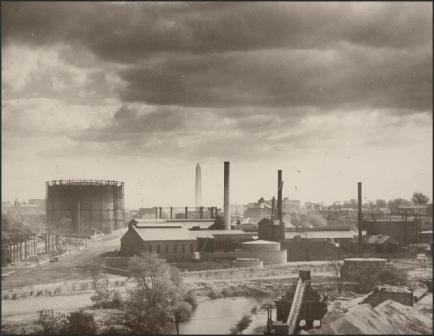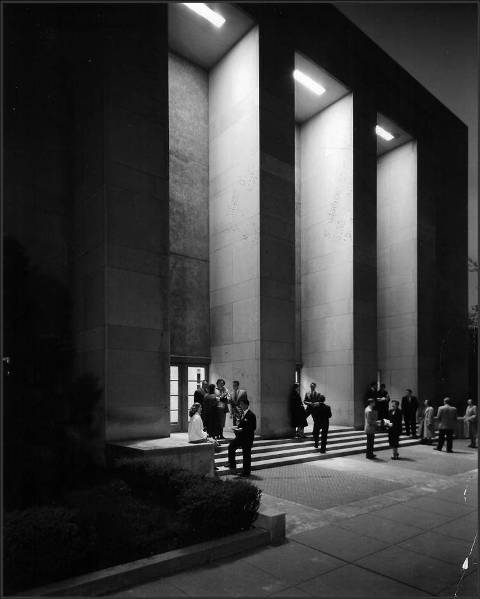The area around Washington Circle, named “Round Tops” after the notorious gang that controlled it, was considered one of the most dangerous parts of town. During the population boom after the Civil War, Foggy Bottom’s “ethnic” and working class inhabitants were primarily Irish and German. A Washington Post article quoted a then-resident: “If you picked a fight with an Irishman at 17th Street, you’d have to fight every other Irishman down to the river at 27th Street before you could escape.”
August 12, 2011 | 8:12 AM | By Anna
Good morning, DCentric readers! Here are today’s links:
Berkeley and Oakland Come to the Table Legendary Chef Alice Waters on food as a social justice issue: “I think there’s some extraordinary people within Slow Food who really speak to food justice…Food justice, the right of everyone to eat well, is something just that’s deeply part of Slow Food; it comes from the Italian labor movement.” (Mother Jones)
A station manager’s message for ‘these white people who hate Metro’ A Metro station manager vents via Facebook about “white people”. TBD asks: “Why is race so intrinsically tied to the worker’s assessment of how people see and talk about Metro?…Are these isolated thoughts from a station manager or do they reflect more broadly the sentiments among Metro workers?” (TBD.com)
Columbia Heights Bias Attack: When Cops Look the Other Way “The ease with which the panic of the victims was ignored points to a larger problem with the way the anger of black women can be callously dismissed. It’s an attitude ultimately traceable to the ‘angry black woman’ stereotype: a caricature of black women that portrays black women as irrationally angry and belligerent with little or no provocation.” (The Root)
Walmart’s Offer: 2,000 Trained People (1,200 of Whom May Get Walmart Jobs) “The Community College of the District of Columbia will get $1.7 million to create a “Retail Academy” that will train 1,000 people over three years in basic customer service skills. The Community Foundation of the National Capital Region will get $1.3 million to hand out in competitive grants to local community-based organizations for work readiness training.” (Washington City Paper)
Continue reading →
August 11, 2011 | 5:07 PM | By Anna
Emily May, a founder of Hollaback NYC (a local chapter exists in D.C.), on street harassment and “culture”:

“A common misconception about street harassment, especially among the educated, is it’s a cultural thing,” May says. But based on the locations of the incidents that are reported on the site, “we see it evenly across race and across economic background.”
— www.washingtonpost.com
August 11, 2011 | 11:55 AM | By Anna
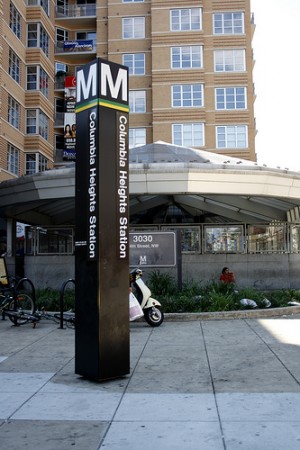
Flickr: aliciagriffin
Columbia Heights Metro, as seen from 14th Street NW.
There are some lessons that can be learned from an incident late last month when five women were assaulted by two men near the Columbia Heights Metro, according to observers. Originally, the men were flirtatious, but when one of the women identified another as her partner, the men shouted homophobic slurs, then physically attacked them.
Chai Shenoy of Holla Back DC noted that it was a bystander who called police. “Kudos,” Shenoy said. “Community engagement is key to creating safe spaces in DC.”
She said Police Chief Cathy Lanier was smart to send a strong signal by investigating the police officers who were involved.
Shenoy said that’s key “with the increase of gender-based crimes happening in the LGBTQ community.”
D.C. residents used social media to air their concerns about the case:
Continue reading →
Prev
Next
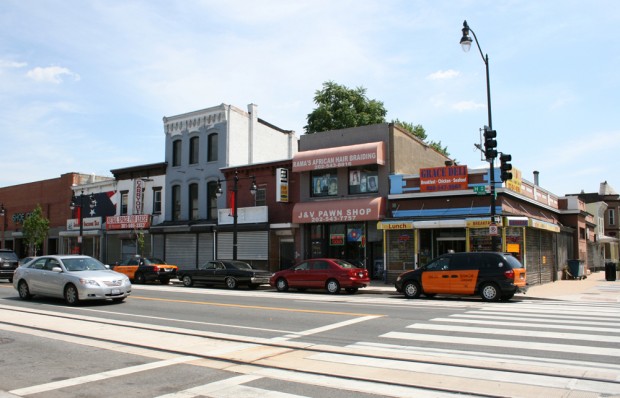
Elahe Izadi / DCentric permalink
The corner of 7th and H streets NE has a mix of small, longtime businesses and vacancies.
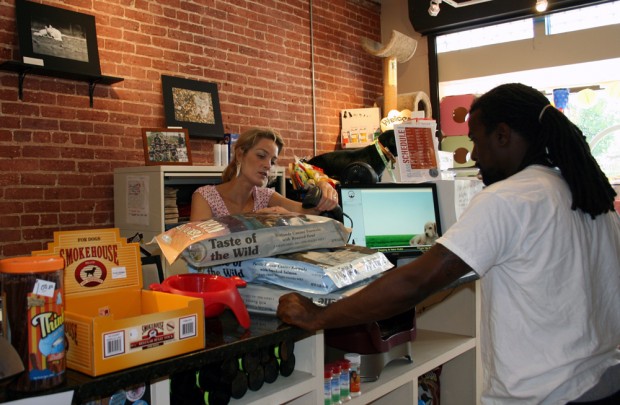
Elahe Izadi / DCentric permalink
Anna Collins, co-owner of Metro Mutts at 5th and H streets NE, rings up a customer.
Elahe Izadi / DCentric permalink
Metro Mutts is located at 5th and H Street, NE, on the same block as several small business and some vacancies.
Elahe Izadi / DCentric permalink
Terri Hill, manager of A Fresh Look by Janice & Company at 7th and H streets NE.
Elahe Izadi / DCentric permalink
Michelle Jones, owner of A.S.P.I.R.E. health store at 7th and H streets NE.
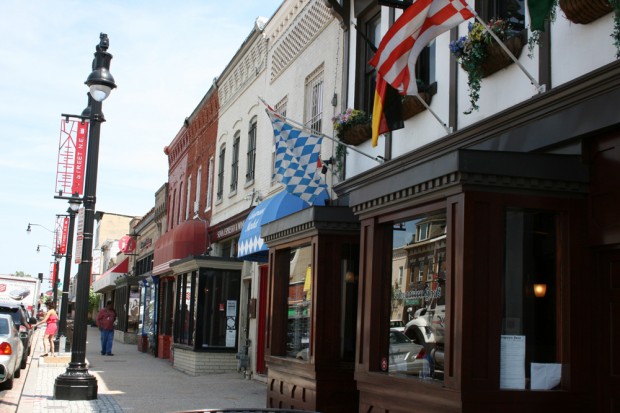
Elahe Izadi / DCentric permalink
A number of new businesses have populated formerly vacant storefronts along the upper end of H Street. But they're mostly restaurants and bars.
Much has been made of the changes along H Street NE as the corridor continues its transformation from a primarily low and middle income black community to one that is wealthier and whiter. Trendy bars and restaurants are increasingly opening in vacant storefronts, attracting diverse patrons en masse during late night hours. But the crowds are nowhere to be seen during the day.
A new D.C. grant program is intended to draw more retail options to the street, creating an H Street that’s as bustling during the day as during the evening. That’s welcome news for many existing business owners who want more people on the streets and in their shops.
“You just don’t want it to be all bars and restaurants,” said Anna Collins, co-owner of pet store Metro Mutts at 5th and H streets.
Continue reading →
August 11, 2011 | 7:56 AM | By Anna
Good morning, DCentric readers! Fresh from the WAMU digital kitchen, bite-sized news for you:
Mayor’s youth program brings fears of London-like mobs to Chinatown Local teens love spending their Friday nights in Chinatown, so The District is organizing a “youth engagement” program to reach out to them. But, “some business owners fear the event will draw more youths to the area and unleash destructive forces similar to the mobs that have been rioting in London.” (Washington Examiner )
D.C.’s summer jobs program coming in $5 million under budget Speaking of youth, in the past, the local summer jobs program that caters to them has gone over-budget due to mismanagement. This year, 14,126 young people (ages 14-21) worked at 1,100 work sites all over the city– and 52 percent of them were from east of the river. (Washington Times)
Post Office Closing Generates Concerns in Northeast If a post office closes, you may have to venture further out to mail a package– or find a job. “The postal service has long been considered a place for women and people of color to work…The postal workforce, according to its own statistics, is 37 percent female, eight percent Latino and eight percent Asian; Blacks make up about 21 percent of the employees since the 1960s.” (Washingtoninformer.com)
A Modest Proposal, Cont. More from Ta-Nahesi on the “g-word”: “But when we talk about gentrification, understand that we really are talking about the result of actual policies…erected with the explicit intent of making sure that another group of Americans remain a permanent peon class. This is not the lens to view all of black America, but in terms of that portion that really is being priced out, that really can’t experience a functioning neighborhood, this is a start. Gentrification is not magic. It’s what our forefathers intended to happen.” (The Atlantic)
Continue reading →
August 10, 2011 | 8:45 PM | By Anna
There are 549 census blocks where the numbers don’t add up. One error? Counting people who “live” where there are no residences…like a median on Massachusetts Avenue NW.
The city successfully challenged its 2005 estimate upward by more than 31,000. City planning director Harriet Tregoning said not to expect such a big boost this time.
The issue isn’t a massive undercount, Tregoning said, “just that there’s numbers that are nonsensical.”
”There probably is an undercount, but it’s not substantial,” she added.
— www.washingtonpost.com
This message was scrawled on a wall in Tenleytown. A literal request to fill the D.C.-condo demand, or a sarcastic slight at gentrification?
Prev
Next

Elahe Izadi / DCentric permalink
Del. Eleanor Holmes Norton hosted a D.C.-wide job fair Tuesday.
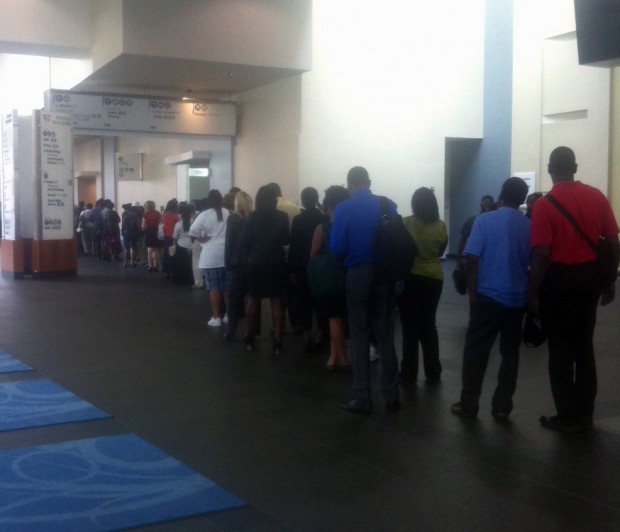
Elahe Izadi / DCentric permalink
Job seekers formed a line that wrapped throughout the Convention Center for a D.C. job fair Tuesday.
Elahe Izadi / DCentric permalink
Job seekers came armed with resumes to Tuesday's District job fair. But employers directed people to apply online rather than in person.
Elahe Izadi / DCentric permalink
Job seekers found any available space to fill out job applications at Tuesday's job fair.
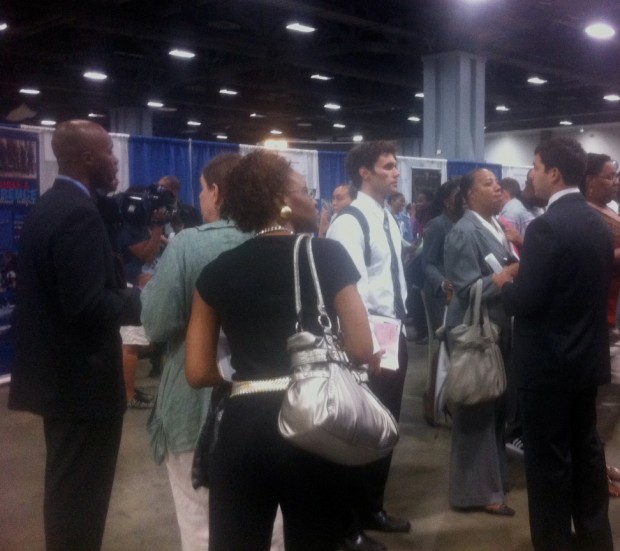
Elahe Izadi / DCentric permalink
About 4,100 unemployed and underemployed District residents came to Tuesday's job fair.
An annual D.C. employment fair drew one of its biggest crowds Tuesday as the District faces an unemployment rate that is higher than the national average.
“This turnout breaks my heart,” said Del. Eleanor Holmes Norton, who hosted the 14th annual fair. “This is a record I wasn’t out to break.”
Last year, about 3,500 people attended Norton’s fair. This year, nearly 4,100 District residents came. About 500 people waited for doors to open at 11 a.m. By noon, a large line of job seekers weaved throughout the Convention Center, from the entrance, down escalators and wrapped around long hallways.
Unemployment in the District is uneven; jobless rates are higher than 20 percent in predominately black and low-income Ward 8, while it’s slight above 3 percent in affluent Ward 3 [PDF].
“The disparity has to be gotten rid of in the District,” Norton said. “The only good jobs available in the government or private sector are upscale jobs. If you don’t have at least a year or two of college, you’re doomed.”
Continue reading →
August 10, 2011 | 7:31 AM | By Anna
Good morning, DCentric readers! Woohoo for Wednesday and delicious links:
RACE Card – Michele Norris NPR/All Things Considered host Michele Norris asked people all over the country to send her a postcard bearing a six-word statement on race. Here are a few: “You talk like a white girl”. “Racist Childhood. I didn’t buy it.” ” Start with kids, and MIX well” “LOOKOUT! Hispanics are taking over.” “It will be up to women.” (michele-norris.com)
How America turned poverty into a crime According to Kaaryn Gustafson of the University of Connecticut Law School, applying for assistance feels like being booked by the police: “There may be a mug shot, fingerprinting, and lengthy interrogations as to one’s children’s true paternity. The ostensible goal is to prevent welfare fraud, but the psychological impact is to turn poverty itself into a kind of crime.” (Salon)
After Years Of Research, Confederate Daughter Arises And she’s not white: “Rice is the second black Real Daughter to be recognized by an organization that was once exclusively for white women. Yet some progressive historians and Civil War buffs frown at her father’s story. They say the very term “black Confederate” supports the notion that the Civil War wasn’t about slavery.” (npr.org)
Hispanic households: Looking at the wealth gap Sir, about that wealth gap– why did Hispanics lose more equity than their black home-owning counterparts? “Over time more and more Hispanics had become economically vulnerable and eminently exploitable, a fact attributable in large part to American immigration policy.” (Economist)
A color-blind Montgomery County is still a myth “(Joey) lives in Four Corners and said he’d support a curfew. He won’t take his family to Silver Spring at night because of ‘thug-looking kids’ hanging out there. ‘And I’m not just talking about black and Latino kids,’ he quickly added. If we don’t see race, is that statement necessary?” (Greater Greater Washington)



